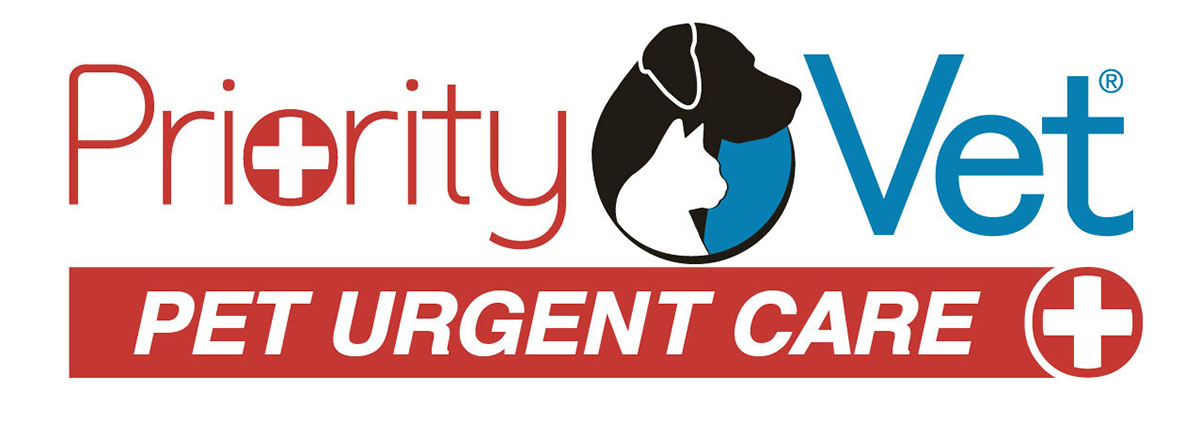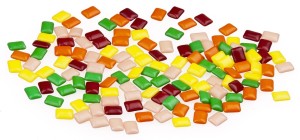Background
Xylitol is popular as an alternative sweetener to sucrose (table sugar) because it has the same level of sweetness and 40% fewer calories. Xylitol is used in a variety of food and non-food products, including sugar-free foods, especially gum and candy, It is also found in toothpaste, oral hygiene products, medications, medication bases, vitamins, supplements, cosmetics, deodorant, skin gels, sunscreen, and hair care products.
Xylitol Toxicosis in dogs (cats appear to be unaffected) occurs mainly by ingestion of sugar-free gums and candies, but other exposures have occured. This sometimes fatal toxicosis has unfortunately become all too common with the advent of trendy gums, such as Ice Cubes, Orbit and some Trident products, which contain large amounts of the toxic sweetener. Interestingly, because it has antibacterial properties, some oral health products for dogs and cats designed to be placed in drinking water contain xylitol. When diluted properly they are non-toxic, but ingestion of the concentrated solution may be.
Xylitol content of manufactured food products varies considerably between different brands. In the case of gum and candies, content can also vary in different flavors of the same brand. For instance, one brand of sugar-free gum has 9 mg of xylitol per piece for all flavors except one, which has 700 mg per piece.
Determining the amount of xylitol in a manufactured product (e.g. gum, candy) can be challenging to pet owners and veterinarians. Manufacturers are not required to place the amount of each ingredient on a product label. Further, many are unwilling to provide this proprietary information except to animal poison control centers. A crude calculation based on the label may be of help but this is unreliable at best. This, combined with the typical uncertainty and variability of the amount of product ingested, usually necessitates that the pet owner contact the poison control center, in addition to visiting their veterinarian.
Mechanism of Toxicity
Xylitol is rapidly absorbed following ingestion. Even small doses of xylitol induce an exaggerated insulin release that is 3-7 times that caused by equal amounts of dextrose. This results in hypoglycemia (life threatening low blood sugar). Liver injury (including acute liver failure) sometimes occurs in dogs with ingestion of large amounts of xylitol; the mechanism for this injury is poorly understood. The liver injury can lead to blood clotting disorders, anemia and neurologic symptoms..
Symptoms of Toxicity
Signs of hypoglycemia (low blood sugar) generally occur within 30-60 minutes of ingestion and may include:
- loss of appetite, vomiting and diarrhea,
- lethargy, incoordination, restlessness and collapse,
- seizures, and coma.
Signs of liver injury may occur 12-72 hours after exposure and may include:.
- Jaundice
- Abdominal pain
- Vomiting and diarrhea
Laboratory Tests
No test is available to detect xylitol, so diagnosis is based on a history of exposure, consistent clinical signs, and bloodwork results. Anemia and low platelets may be detected on a CBC. Elevations in liver enzyme values, low blood glucose, potassium and phosphorus may be detected on a Chemistry Panel. Coagulation profiles may also be abnormal.
Treatment
Dogs known or suspected to have ingested a Xylitol containing product must have emergency medical treatment immediately. Depending on the timing of ingestion and any current symptoms, your veterinarian may induce vomiting. Other diagnostics, therapeutic and supportive measures are instituted on a case by case basis. Hospitalization for IV fluid therapy and close monitoring for life threatening complications are typically recommended for 24-72 hours following exposure.
Prognosis
Prognosis for dogs developing only hypoglycemia is excellent, provided appropriate medical therapy is administered to address the hypoglycemia. Dogs that develop liver toxicosis have a more uncertain prognosis and require aggressive treatment. Dogs that develop bleeding or neurologic abnormalities have a generally poor prognosis.
Prevention
Avoid buying products that contain the toxic sugar substitute Xylitol or keep them out of reach of dogs. Seek veterinary care immediately if you think your dog may have ingested Xylitol.

